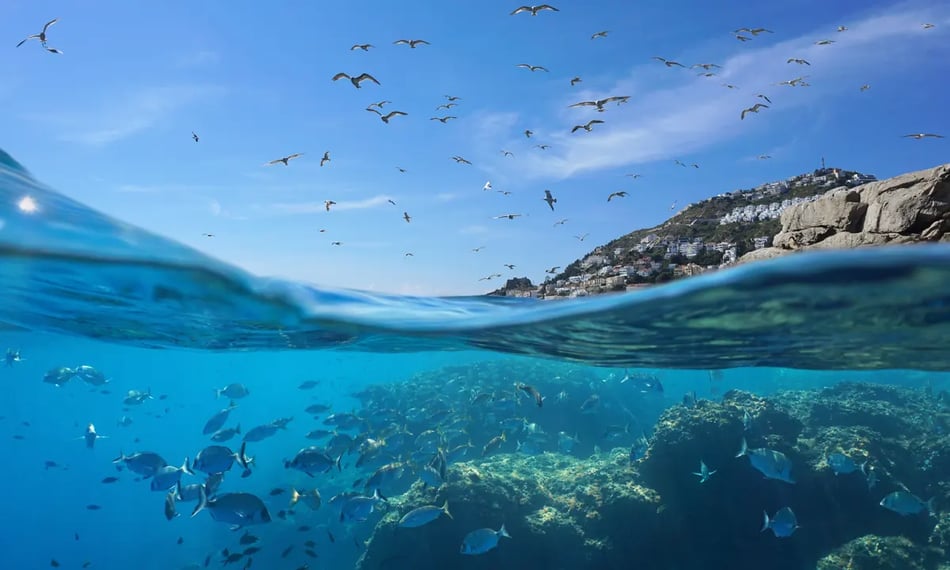Decoding Carbon Credits: A Pocket-Sized Solution to a Global-Scale Problem

Tin
3
min. read

Economic growth and environmental preservation are seemingly at odds with each other. One remarkable tool that aids in the mission to harmonize the two is the generation of carbon credits. Put simply, a carbon credit is a tradable certificate that provides the holder with the right to emit one tonne of carbon dioxide or an equivalent amount of a different greenhouse gas by offsetting its emission through carbon removal or avoidance. This innovative approach allows businesses and individuals to participate in climate action while continuing their economic activities.
Carbon credits are produced by certified climate action projects that actively work to reduce, remove, or avoid greenhouse gas emissions. These projects can range from renewable energy installations to reforestation initiatives and energy efficiency improvements. To acquire carbon credits, interested parties can purchase them from the market via several platforms and brokers that facilitate the trading of carbon credits. Additionally, companies may also generate their own carbon credits by implementing emission reduction projects internally.

However, for this solution to be impactful it must bring additionality - that is, it must actively avoid the release of CO2 or remove carbon from the air in a manner that would not have happened without the project in place. To ensure the credibility of emission reductions, third-party audits, such as those performed by the Verified Carbon Standard (VCS), verify that the emission reductions from these projects are real, measurable, and quantifiable in their contribution towards climate change mitigation. This verification process instills confidence in the market and ensures that the carbon credits being traded align with established standards and best practices.
A perfect example of how carbon credits can marry environmental conservation and economic sustainability can be seen through the success of Tambopata-Bahuaja Reserve project in Peru's Amazon region. The fund created eco-friendly livelihoods for local communities through commodities like cocoa and Brazil nuts, while the resulting cutback in emissions was converted into carbon credits. Entities aiming to offset their carbon footprint bought these credits, generating returns that allowed for the continued existence of the project and even income for the local communities.
Another example is the Humbo Ethiopia Assisted Natural Regeneration Project, which prioritizes restoring deforested land by stimulating regrowth of native trees. The carbon sequestered during this restoration process generates carbon credits, and the World Bank-managed BioCarbon Fund sells these credits. Revenue from these sales not only provides a reliable funding stream for the ongoing project, but also benefits local farmer cooperatives involved in the initiative. It is remarkable that carbon credits work not just to protect ecosystems and restore forests, but also to empower communities.
While carbon credits provide a valuable mechanism for companies to offset their emissions, it's important to recognize that they are only an additional measure to aid in protecting our environment. If we truly seek substantial environmental impact, the true goal should be to lower overall emissions. This entails exploring and implementing better energy alternatives, adopting sustainable practices, and integrating environmental considerations into the heart of our business models.

What does this mean for you? You don't need to be a large corporation or a country to get involved. There are already existing platforms that sell carbon offsets to individuals, and some projects that sell directly to individuals without a platform. This is what the IMARCS Foundation is doing with our "Adopt-a-Clam" project - anyone wishing to offset their carbon can do so by supporting the growth of our giant clams. When these clams grow they take in and store CO2, and you can literally see the carbon being stored as their CaCO3 (calcium
carbonate) shells grow. When you adopt a giant clam you are supporting the needed infrastructure to ensure this carbon-gobbling growth, and you can confidently offset the CO2 that is emitted from daily actions as you watch it pile up in these big, beautiful shells. [Plus, you will get quarterly photo updates on your adopted clam so you can track its growth!]
So, the next time you plan a long-distance flight, consider buying a carbon credit (or two) to offset your share of the emissions. By doing so, you're not just traveling; you're also contributing to a cleaner, healthier planet.
So, the next time you plan a long-distance flight, consider buying a carbon credit (or two) to offset your share of the emissions. By doing so, you're not just traveling; you're also contributing to a cleaner, healthier planet.
The ethos of carbon credits reflects IMARCS' mission: using marine science for climate mitigation and sustainable growth. By storing CO2 in sea life, we are aligned in our shared objective with carbon credits - fostering a prosperous, balanced future where economic and environmental interests coexist harmoniously.
Sources:
Carbon Credits - what are they and how do they work? | South Pole. (n.d.). South Pole.
https://www.southpole.com/carbon-offsets-explained#:~:text=Carbon%20credits%20are%20measurable%2C%20verifiable,greenhouse%20gas%20(GHG)%20emissions.
Ecosphere. (n.d.) The Tambopata-Bahuaja REDD+ project in the Peruvian Amazon. Retrieved from
https://althelia.com/wp-content/uploads/2014/12/Althelia_TAMBOPATA_resetA3_8pp.pdf
Biocarbonfund. (n.d.) Ethiopia: Humbo Assisted Natural Regeneration Project. Retrieved from
https://www.biocarbonfund.org/sites/biocft1t2/files/documents/Ethiopia%20-%20Humbo.pdf